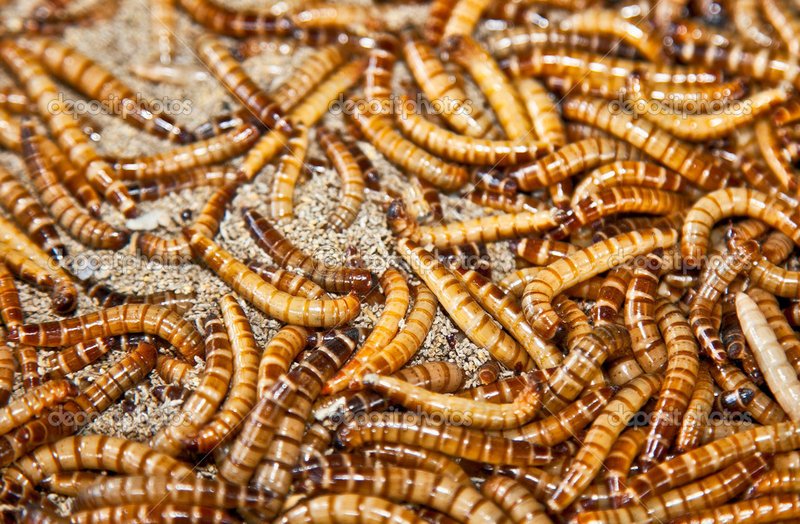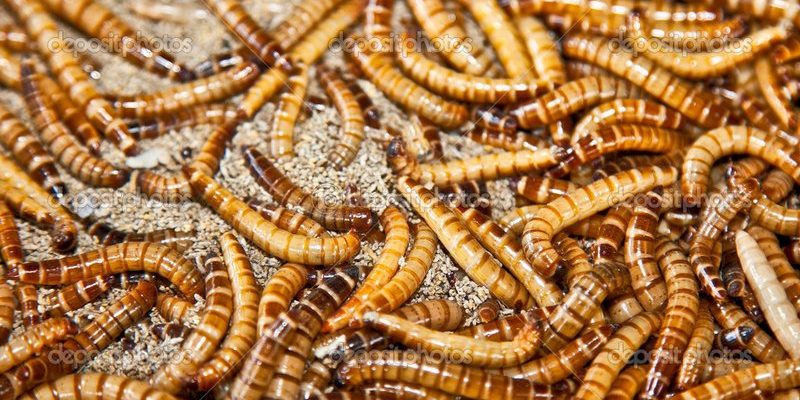
So, how do you recognize a mealworm when you see one? Here’s the thing: they don’t look like your average worm. They’re plump, segmented, and often a yellowish-brown color. Plus, they thrive in damp environments where there’s plenty of organic matter to munch on. Whether you’re curious about these critters for gardening purposes, pet feeding, or just because they pique your interest, we’ll explore how to identify them and where to find them. Let’s dive in!
What Exactly Is a Mealworm?
Mealworms are actually the larvae of the darkling beetle, specifically of the species *Tenebrio molitor*. They typically grow to about 1 to 2 inches long and have a distinctive, rigid body that’s segmented, kind of like a miniature caterpillar. You might be wondering why they’re called “mealworms.” Well, they thrive on organic material, especially grains, which is why they often hang out in stored food products or around compost piles.
These little larvae play an important role in the ecosystem. They decompose organic matter, turning it back into nutrient-rich soil. Think of them as nature’s recyclers! They also serve as a food source for various animals, including birds and reptiles, and even some people enjoy them as a protein-rich snack. Now that you have a basic understanding of what mealworms are, let’s talk about how to spot them in the great outdoors.
Where to Find Mealworms
Mealworms love places filled with organic matter. If you want to find them, start by looking in areas where decaying plants or food scraps are abundant. Common spots include:
- Compost bins: These are a goldmine for mealworms. The warm, moist environment is perfect for them to thrive.
- Gardens: If you have mulch, dead leaves, or compost piles, you’re likely to find mealworms there, feasting on the decomposing material.
- Stored grains: In barns or pantries, look for old bags of flour, grain, or cereal. Mealworms love to make a meal out of these foods.
- Wood piles: If you’ve stacked some firewood or have decaying logs, check around them. The moisture and decaying wood create a perfect habitat.
When you’re out searching, it’s helpful to keep an eye out for their habitats rather than the worms themselves at first. If you find a suitable area, get your hands a little dirty and start digging around!
Identifying Mealworms by Appearance
Now, let’s talk about the juicy details of identifying a mealworm. First, they’re not slimy like earthworms; they’re more like little, squirmy sausages. Here are some key features to help you spot them:
- Color: Mealworms usually have a light brown or yellowish tint to their bodies, which can sometimes appear shiny under sunlight.
- Body Structure: Notice the segmented body? It has distinct divisions that make it look almost like a little caterpillar. Each segment is visible and adds to their unique look.
- Size: Adult mealworms range from 1 to 2 inches long. If you see something smaller, it might be a different type of larva.
- Movement: They have a characteristic wriggling motion. If it’s a smooth, gliding motion, it’s probably something else!
Don’t be surprised if you find them in groups — they tend to hang out together, especially in food sources. So, if you spot one, there’s a good chance others are nearby!
Behavior and Habitat Preferences
Understanding the behavior of mealworms can also shed light on where to find them. They prefer dark, moist, and warm environments. This is why you’ll often find them hiding under piles of leaves or within the layers of a compost heap. Mealworms are nocturnal, so they tend to be more active at night when they venture out to feed.
If you decide to go hunting for them during the day, you might need to dig a bit deeper into organic matter, as they like to remain hidden from predators. Also, keep a lookout for signs of damage to grains or plants; that’s usually a good indicator you have some mealworm guests in the area.
Why Identify Mealworms?
You might be asking yourself, “Why should I bother identifying mealworms?” Well, recognizing them can be quite useful! If you’re into gardening, mealworms can actually help break down organic waste in your compost. Plus, they’re a popular choice for those who keep reptiles or birds, serving as a nutritious snack.
If you’re a fan of sustainable living, knowing how to identify and utilize mealworms can enhance your composting efforts. They can help speed up the decomposition process and enrich the soil. In addition, many people find them straightforward to raise at home for food or bait, which is another reason to get friendly with these little creatures.
Mealworms vs. Other Worms
To solidify your mealworm identification skills, it helps to compare them to other common types of worms. You’ve got earthworms, for instance. Unlike mealworms, earthworms are long, smooth, and usually a darker shade of brown. They play a different role in the ecosystem, focusing more on aerating the soil than decomposing organic matter like mealworms do.
Then there are the common red wigglers, which are often used in vermicomposting. These worms are smaller and have a more reddish hue, making them look quite different from mealworms. If you’re out looking for mealworms, being able to differentiate them from these other types will help increase your confidence in your identification skills.
Final Thoughts on Identifying Mealworms
Identifying a mealworm in its natural habitat can be a rewarding experience. Not only does it connect you with nature, but it helps you appreciate the little roles these creatures play in our ecosystem. Remember, look for those distinctive features—color, body structure, and behavior—and check out organic-rich areas like compost piles or gardens.
As you explore, keep an open mind and enjoy the learning process. Whether you’re a seasoned naturalist or just curious about what’s wriggling around in your backyard, spotting a mealworm can feel like discovering a hidden treasure of nature, and who doesn’t love a little adventure? Happy hunting, and may your curiosity lead you to many mealworms!

